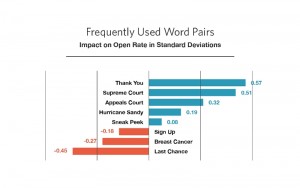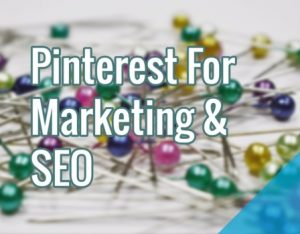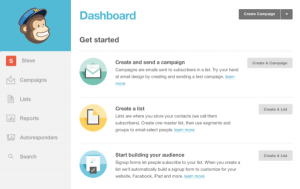Operationalizing a High Volume Onboarding Team. How to do it scalably and efficiently while achieving near 100% Customer Satisfaction and lowering time to desired outcome.
If you’ve spent any time in SAAS Customer Success, you’ll understand that one of the most important aspects of adopting a new software product is the onboarding and training period. It’s during this window of time that first impressions are established and initial value is delivered to the team that will ultimately be using your product. Drop the ball here and all the effort your sales team made to close the deal will be lost. I like to say that the most important moment of the customer journey is the buy moment, because that’s when the real race begins. Lincoln Murphy describes this as “time to desired outcome,” the lag between the buy moment and when their ultimate need is served. Customer Success—onboarding specifically—should be purposely focused on winning that race to desired outcome.
Experienced CS leaders understand this and therefore will invest time and people to make sure that their customers achieve that value as quickly as possible. That investment depends on a payback that is achievable, so what happens to the smallest customers where white-glove service can’t be profitable? Typically, you either lose money on them (i.e. invest in their acquisition), or they are relegated to the self-serve channels and the community forums. However, if implemented correctly, it is possible to set-up an efficient, consulting focused onboarding program for smaller customers with ACV < 1500.
When I joined ProsperWorks, I was faced with this exact challenge. ProsperWorks is a CRM product that while highly intuitive and designed with a beautiful UI and dead simple UX, CRM implementation requires significant thought and planning to correctly set-up for success. This is precisely why 47% of CRM implementations fail. With that in mind, we implemented a process for efficiently onboarding our smb customers by applying the following key concepts.
Keep up the Momentum: (Or Minimize the Mistakes)
I have a philosophy that each day starts Green and only based on your mistakes do things turn red. That means that for each new customer, the first interactions contribute to maintaining the momentum created by the sale; delays or missteps will contribute to friction, frustration or other reasons that will ultimately reduce the chances for a successful outcome. Your tactics should be designed to propel the customer through this stage, much like what it takes to keep a hula-hoop spinning around your waist.
- Get the first meeting on the calendar within 24 hours of the deal close.
- Use a calendar APP (such as Calendly) so customers can self schedule.
- Provide resources for homework assignments that customers can complete prior to the first call.
- Be sure to review the sales discovery notes and leverage that info in your first emails and the first call: Very Important!
Establish Ownership
This is a huge concept. Once the Sales team closes the Deal, the customer’s success is OWNED by Customer Success. This means that only one person is on the hook for the account and that starts with onboarding. Now, this doesn’t mean that they are on their own—they must leverage resources and escalate to sales for help—but they do ultimately remain responsible for the resolution.
- Establish a culture of ownership amongst the team that the customer is theirs and that their customer’s success is in their hands.
- Communicate quickly and consistently. Automate as much as possible but emphasize a quality interaction.
- Emails to customers should come from the Consultant, never from a no-reply email address.
- Track the time between customer interactions and be sure to never exceed the maximum allotment between each.
- Define and follow an escalation plan when your customer dis-engages or falls off the plan.
Nail the transitions
In the ideal situation, the Customer would never have to be transitioned to other owners within your company. This is best for continuity of communication, having a single point of contact for all communications, ultimately developing a strong relationship. Reality is, however, that this simply might not be scalable and therefore insufficient Customer communications result in lower quality service. Dan Steinman, from Gainsight, coined the phrase “Nail the Transition,” and he couldn’t be more correct. In my experience, most customer friction begins with poor hand-offs and miscommunication.
- Capture all sales notes during the sales process: Key buying decision and success KPIs.
- Review the account ownership successions (sales>onboarding>CSM) and make sure the customer understands who they should contact and when.
- Gate the handoffs between teams with specific exit criteria and enable the receiving team to veto.
Automate, Automate, Automate
The key to executing on the first three concepts is to leverage data, automation and process as much as possible, freeing up your team from transactional, administrative tasks, and focusing on the higher value interactions. It’s never been easier to automate welcome emails, handoffs, and share knowledge via your CRM, using forms to capture and share data that can be leveraged in your communications. Always be sure to monitor the time between interactions to keep on track.
Combine One-to-Many tactics with one-on-one sessions to maximize time vs quality.
The biggest challenge in onboarding small business customers is time—you simply can’t invest the same time in a $ 1500 ACV customer as a 15K or 100K ACV. This is where the customer has to contribute to their own success. Prior to the 1:1s ask the customer to study up on the basics. They should watch the training videos, and read the how-to articles, leaving the more complex questions and topics for the one-on-one session.
Continuously measure the effectiveness
At the end of the day, we are diligently focused on the outcomes, not details, so we measure success of this process via three specific KPIs and report on each of these everyday via a dashboard public to the team. It encourages the primary focus of the team, which is to drive towards adoption as quickly as possible, with the highest quality.
- Product Adoption @ Day 60-90
Adoption isn’t something that can be measured once. It has to be established and nurtured over time. The best way to incentivize focus on adoption by onboarding is to measure it well after the process has been completed. We look at the success of onboarding two full months after, when it’s easy to see whether the customer has truly adopted or not. It also encourages collaboration with Customer Success, since they will have already taken over the relationship by the time we measure adoption. Both Onboarding Specialists and CSMs work together to drive adoption.
- Onboarding CSAT
Survey your customer soon after they transition out of Onboarding to gauge their experience and identify problem areas. Incorporate feedback into the process where relevant, but stay committed to the overall goals.
- Meeting Velocity
Balance quality and outcome with capacity and operational efficiency. The team needs to be effective with quality, but still needs to get the work done. Place a target for the expected number of new customers per month and compensate based on it.
Incentivise the team
Your team should be oriented towards achieving these outcomes, so it makes sense to align compensation plans to those goals. I recommend weighing the bulk of the payout on the long-term leading indicator, which should be adoption, and smaller but accelerated payouts on the short term velocity and satisfaction goals. Payout on short cycles that map to your revenue plan, (monthly vs quarterly vs annual). Benchmark the goals and adjust as the process improves and goals get easier to hit.
I’ll leave the details of the process for you to map to your organization, customer, and process needs. By using this approach we have been able to lower our threshold for onboarding, achieve 95+ CSAT, and reduce churn by over 100% in one year.
Business & Finance Articles on Business 2 Community
(128)







